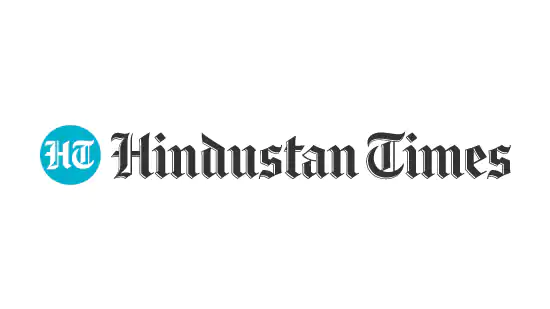Tragically, neither city delivers on issues that should matter most to its citizens: infrastructure; law and order; a modern mindset that includes involved citizens, writes Namita Bhandare.

HT Image
In the early 90s when I moved back to live in Delhi — ironically because I had married a Marathi manoos who lived as an ‘outsider’ in the capital — the Bombay (not yet Mumbai) versus Delhi debate was at its peak. Bombay was cool and cosmopolitan; a city of opportunity and dreams where everybody who worked hard enough, could make it big; a city that was so egalitarian that it didn’t give a rat’s tit to your last name; a city so safe for women that a ‘beautiful woman’, as the old saying went, ‘clad in the finest jewels may walk in the jungle safely at midnight’.
I had lived between both cities but finished school and college in New Delhi. Then, I left. Returning was like being reassigned to purgatory. Delhi was status-conscious and hierarchical with its own rigid social pecking order. Delhi was about nepotism and networking where those who made it big in the ‘import-export’ business did it because daddy-ji was pulling strings somewhere. Delhi was the city — or over-grown village, depending on your perspective — where no woman could be safe on the streets.
At a discussion during the launch of Shobhaa De’s Superstar India in Delhi recently, I heard De repeat that old argument to Vir Sanghvi (who, like me, has lived in both cities). Delhi was pedestrian, networked, status conscious, bureaucratic, unkind to women, aggressive, and so on and so on. It was like being teleported back in time. Was De really blind to the ways in which the two cities had changed, their huge differences blurring with time? Or was she just being obstinate in sticking with her original thesis?
Mumbai lost its right to the tag ‘cosmopolitan’ in the winter of 1992, at a time when it was still called Bombay. The communal riots that followed the demolition of the Babri Masjid took 900 lives and ended with the devastating bomb blasts of March 1993, allegedly orchestrated by Dawood Ibrahim as revenge. Over two lakh people fled the city, with many relocating permanently to localities dominated by their religious community. That year changed everything for the city where I grew up.
Over 16 years later, the notion of the ‘other’ remains. Today, Raj Thackeray can rise out of his uncle’s shadow by repeating that old, success formula of drumming up fear and loathing of the ‘outsider’; if his uncle made South Indians his target, the nephew has been going hammer and tongs against North Indians. The bigger the target —Amitabh Bachchan, Amar Singh — the more assured he is of making national headlines.
But the city has changed in other ways. In the early nineties I worked for a newspaper that had offices in Ballard Estate. The hours were long and very often, late at night, I would find myself alone on the streets looking for a taxi. On the way I would pass groups of young men smoking smack. I never felt threatened by them or by the looming shadows behind those enormous gulmohar trees.
Would I do it now? I doubt it. Women in Mumbai are no longer safe in public spaces. In August 2002 a young woman was raped on a suburban train, in the presence of half a dozen people, including a journalist. Things have only gone downhill since. The images of two women being molested by a mob outside a luxury hotel on the first day of this year has laid to rest any claims about the city being safe for women.
Meanwhile, things were changing in Delhi too. At around the same time as the Mumbai riots, Delhi’s babus were trying to come to grips with the new economic policies of the then Finance Minister, Manmohan Singh. It would take over a decade to fully understand their impact, but even then we understood that we were witnessing the beginning of a new era; one where middlemen would count for less and less and one where merit and professionalism would be the key drivers.
If Shobhaa De says Dhirubhai Ambani was Mumbai’s homegrown billionaire, Delhi has seen the rise of its own business titans: Sunil Mittal, for instance, who rode on the crest of the new liberalised policy to make the leap from being primarily an importer of Korean handsets to becoming the country’s foremost telecom Tsar.
So, Mumbai changed and Delhi changed — and then, a third thing happened along the way: the emergence of national brands from McDonald’s to Benetton that resulted in a certain — and for me, depressing, — uniformity. While my favourite Mumbai breakfast remains vada pau and I know the shop in Girgaum that makes fabulous handmade kolhapuri chappals, my daughters know they can order the same thin crust pizza, no matter which city they are in and buy the same shoes whether they’re shopping in Delhi or in Mumbai.
This is not to say that Delhi has become ‘better’ or Mumbai has become ‘worse’. You could still argue that women are safer in Mumbai than Delhi. I would probably concede that Delhi drivers experience more road rage than those in Mumbai. But the difference is one of degrees and the tale of the two cities is no longer a story in black and white.
Tragically, neither city delivers on issues that should matter most to its citizens: infrastructure; law and order; a modern mindset that includes involved citizens; a public aesthetic and elected representatives who are dedicated to public service. These are the issues that should be exercising those who seek to chronicle our times; people like De.
But sometimes, it’s easier to play on the surface, sticking to generalisations and stereotypes. And therein lies a tale.